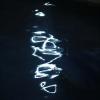Search the Community
Showing results for tags 'piston fillers'.
-
A vintage Aurora 88 has been on my grail list for a while. This turned out to be the year. I came across an original 88 in good condition from a seller here with lots of positive reviews. The price was right. Not Nikargenta but beggars can’t be choosers. Count me among Aurora 88 fans. The pen li...
- 25 replies
-
- italian pens
- hooded nibs
-
(and 1 more)
Tagged with:
-

Suggestions Wanted ~ £50 (Or Less) Piston Fillers
evyxmsj posted a topic in Fountain & Dip Pens - First Stop
That's $76 dollars for some of you I'm looking at adding to my FP collection, and I just like piston fillers. I'm not particularly interested in converter cartridges at the moment though. If anyone has any recommendations, I would be grateful. I'll want them all of course, but it will be a grad... -
An exiting project. Restoring a lot of old and forgotten 1938 No Name German piston filling fountain pens. Recently I acquired a bunch of really old and dirty New Old Stock pens from Germany. I was told they were kept in an old trunk for more than 70 years and they were recently rediscovered when...
- 41 replies
-
- new old stock
- restoring
-
(and 2 more)
Tagged with:



